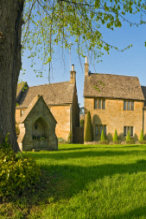October 2013 and chancel repair liability
 October 2013 will be a key month for the issue of chancel repair liability. Rachel Stott explains why.
October 2013 will be a key month for the issue of chancel repair liability. Rachel Stott explains why.
Chancel repair liability has been described as a worry which conveyancers must assess.
Since 2007 and the case of Aston Cantlow PCC v Wallbank [2003] UKHL 37; [2004 1AC 546], there has not been a significant reported case, but Wallbank rejuvenated concerns about chancel repair liability (which in this case amounted to repair costs of £189,969 plus VAT and significant costs) and potential professional negligence. Of course, it has also been a windfall for the insurance industry.
The spotlight is now on chancel repair liability once again because the ten-year transitional period for continuance of chancel repair liability as an overriding interest expires on 13 October 2013.
This note briefly considers the significance of 13 October 2013 for chancel repair liability in respect of both registered and unregistered land.
Some definitions
- PCC: Parochial Church Council (in England these are the bodies which are responsible for the repair of the c5,200 parish churches and have the right to enforce CRL)
- RBCW: Representative Body of the Church in Wales - the equivalent of the PCC
- Order: the Land Registration Act 2002 (Transitional Provisions) (No 2) Order 2003
Why is 13 October 2013 a critical date?
CRL was an overriding interest under the Land Registration Act 1925. As a result of the Order, CRL retains its overriding status until 12 October 2013.
As from 13 October 2013 CRL will cease to be an overriding interest, and further protection will be required to enforce liability against those purchasing land after that date.
Note that CRL is not abolished on that date.
Views within the Church are divided. On the one hand, PCCs have obligations to seek costs from someone who is legally obliged to pay and therefore maximise cover for repairs, and this may be a requirement before a PCC can get lottery or heritage funding for repairs. On the other hand, many PCCs do not wish to single out individual landowners within their own parishes. Notwithstanding these divisions, some commentators anticipate a flurry of activity as PCCs and RBCW identify affected land and make applications to protect their rights, where they can prove them.
The means of protecting the interest varies between registered and unregistered land, as set out below.
CRL and Registered Land after 13 October 2013
The right of a PCC or RBCW to demand payment for chancel repairs can be protected by a notice on the register, and notices can be entered before 13 October 2013. They can be entered after 12 October 2013, but only if there has been no change in ownership since 12 October 2013.
The key thing to remember is that CRL will continue to bind the owner of land purchased or voluntarily registered before 13 October 2013 until that land is sold to a third party, even if the right has not been protected by notice in the register.
As from 13 October 2013, a buyer of land for valuable consideration will take free of any liability if it has not been protected by notice in the register.
Properties with a CRL registered against them will remain liable.
CRL and Unregistered Land after 13 October 2013
The right to demand payment can be protected by registering a caution against first registration. Cautions can be registered before 13 October 2013. They can also be registered after 12 October 2013, but only if there has been no change in ownership since 12 October 2013.
As with registered land, CRL will continue to bind the owner of unregistered land, before and after 13 October 2013, until the land is conveyed to a third party. A conveyance will trigger first registration. If a caution has been lodged, the registrar will notify the cautioner (usually the PCC or RBCW), enabling it to protect its interest by entering a notice in the register. If a notice is registered, the property will remain liable.
As from 13 October 2013, the buyer will take free of any liability if it has not been protected by notice in the register at the time of first registration.
Summary
If land is affected by CRL, it binds new owners who purchase before 13 October 2013, even if the liability is not registered. Buyers of land on or after 13 October 2013 will be bound only if the CRL is registered. Failure to register does not extinguish the CRL - the current owner remains liable until the land is sold.
Rachel Stott is a Senior Associate at Veale Wasbrough Vizards. She can be contacted on 0117 314 5284 or by This email address is being protected from spambots. You need JavaScript enabled to view it..